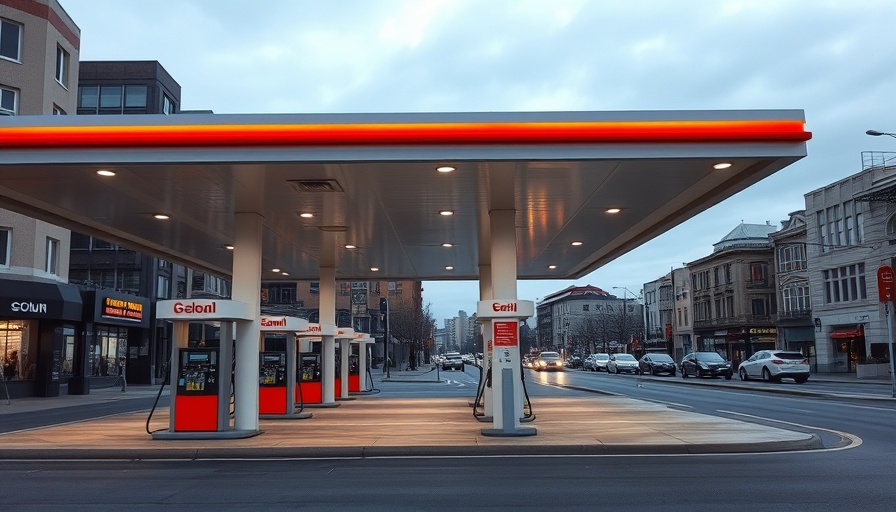
The Hidden Inequities of Toxic Cleanup in San Francisco
San Francisco, a city synonymous with beauty and diversity, is grappling with a troubling reality: racial disparities in toxic cleanup times are stark and alarming. Recent data highlights how communities of color, particularly in lower-income neighborhoods, face prolonged exposure to hazardous environments compared to their predominantly white counterparts. This issue raises questions about environmental justice and the systemic inequalities that persist in urban settings.
Understanding the Historical Context of Environmental Injustice
To grasp the extent of the problem, it's essential to consider the historical context. Communities of color have historically been disproportionately affected by industrial pollution. For many years, these neighborhoods were often the chosen sites for waste facilities or industrial activities, which placed residents at a higher risk for health issues due to toxic exposure. Such patterns reflect a systemic disregard for the well-being of marginalized communities, contributing to a lasting legacy of mistrust in government institutions.
Social Connections: Why This Matters to All of Us
The effects of environmental instability extend beyond local communities; they can ripple out to impact entire regions. Parents want safe environments for their children to grow up in, and the delay in necessary cleanups perpetuates fears about potential health risks. Furthermore, environmental hazards do not respect geographic boundaries; pollution in one area can affect air quality and overall public health across the city. As members of a global community, understanding these dynamics is crucial for advocating for equitable policies.
Real-life Stories that Illuminate the Issue
Take the story of the Hunters Point Shipyard in San Francisco, a site notoriously recognized for toxic waste and its slow remediation efforts. Residents, primarily Black and Latino, have rallied for years advocating for faster cleanup, yet many feel unheard, showcasing the lack of urgency often afforded to communities of color. These personal accounts highlight the painful experiences of individuals who have navigated through bureaucratic delays while worrying about their health and the future of their families. The emotional toll is profound, reminding us that public health is not merely a statistic; it represents real lives and futures.
Future Predictions: What Lies Ahead?
As California sets new standards for environmental accountability, there is hope that changes are on the horizon. Legislative measures aimed at promoting equity in environmental protections may offer relief to affected communities. However, change can be slow, and activists warn that without sustained pressure, those in power may revert to complacency. Continuous advocacy from community organizations and residents will be paramount in ensuring that cleanup efforts receive the attention and urgency they deserve.
Counterarguments: Exploring Diverse Perspectives
While many advocate for urgent remediation, others believe that environmental justice initiatives can hinder economic development. Some argue that by focusing exclusively on cleanup efforts in poorer neighborhoods, resources may be diverted from broader city improvement projects, such as new infrastructures or economic investments. This perspective underscores the need for balanced solutions that can benefit both environmental health and economic growth, maintaining the delicate equilibrium necessary for sustainable development.
Practical Insights: Steps Toward Advocacy
Residents interested in advocating for environmental justice can take proactive steps to confront these disparities. Joining local advocacy groups can amplify their voices and help drive change. Engaging with city council meetings and staying informed about pollution data can equip individuals with the knowledge to hold officials accountable. Additionally, developing community networks fosters solidarity, which is crucial for bringing about necessary reforms.
Creating a Movement: The Importance of Solidarity
As the issue of environmental degradation intersects with race and class, it becomes increasingly clear that unity is essential in the quest for justice. Communities across the country can serve as a model for building coalitions among various stakeholders. Each effort contributes to a larger narrative that recognizes the right to a healthy environment as a fundamental human right. By standing together, constituents can exert the necessary pressure on legislators and organizations to prioritize community health over profit.
Conclusion: A Call to Action
In conclusion, the issue of racial disparities in toxic cleanup times in San Francisco is one that demands immediate attention. As concerned citizens, we must advocate for justice, pushing for policies and practices that truly reflect the needs of all communities. It’s essential to come together to ensure that environmental safety is a priority for everyone—no matter their zip code. Join local movements, engage with your community, and create a demand for accountability; together, we can make a difference.
 Add Row
Add Row  Add
Add 




 Add Row
Add Row  Add
Add 

Write A Comment